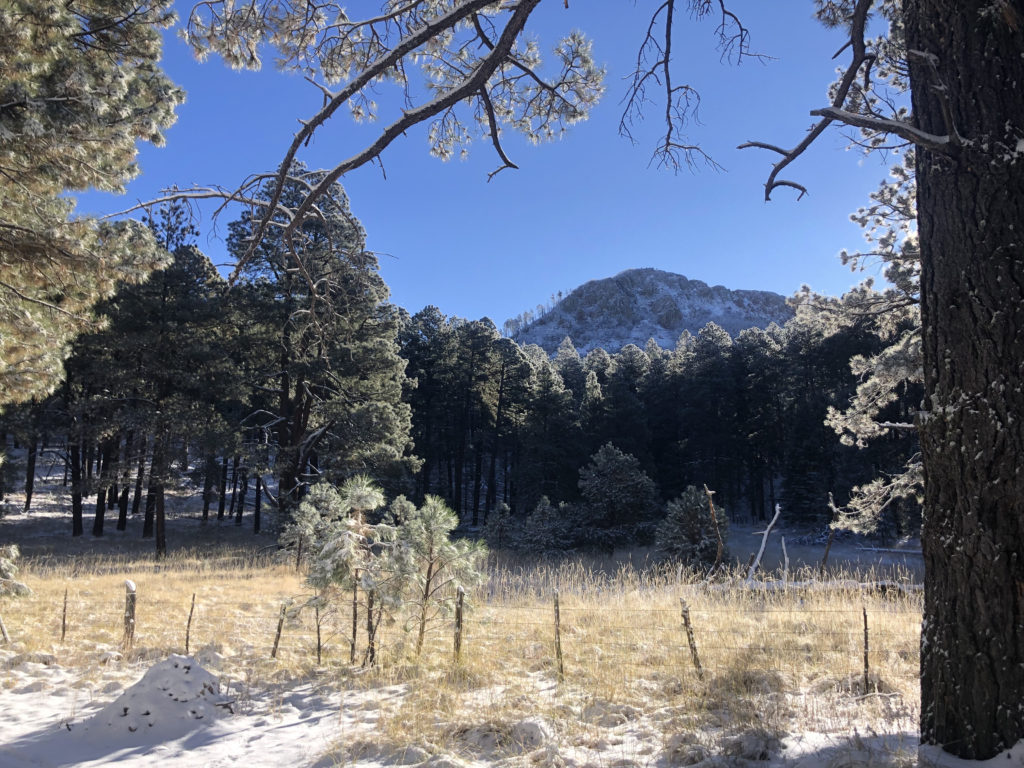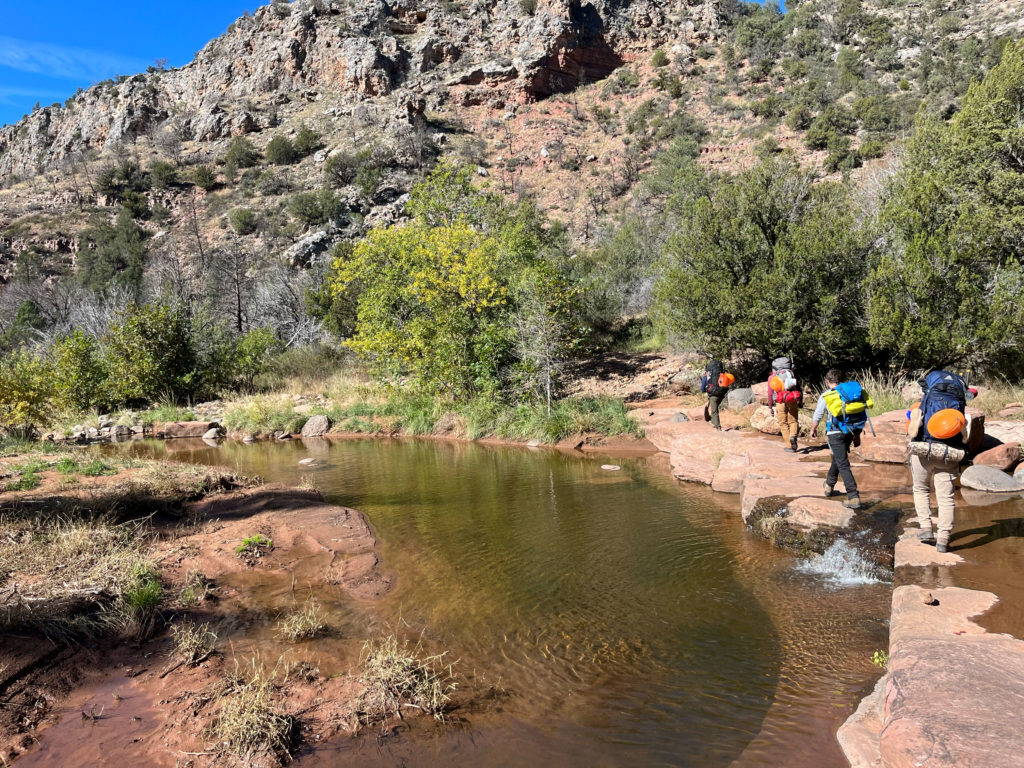
Good day, worthy purveyor of all things Wild Arizona! Dexter here with the scoop from our recent three-in-one, triple-hitch extravaganza. It was a packed 11 days of firsts: first field work in Fossil Springs, first crosscut training for many, first time splitting our field crew into two mini crews, and my first time leading an adult crew.
The hitch started with our crew of nine split into two groups. Myself and three others, Nizhoni Baldwin, Olivia Weinstein and Jordan Zweig, traveled up to the Fossil Springs Wilderness Area for some invasive species management in collaboration with Friends of the Verde River and the Coconino and Tonto National Forests. Following the 40,855-acre Backbone Fire burned in June 2021, invasive Himalayan blackberry thickets had taken over about half an acre of key habitat along the eponymous springs of Fossil Springs Wilderness. Thanks to much planning work from Wild Arizona and its partners, our crew was able to jump in and start treating the thorny vines of blackberry quickly. We could hit the ground running in the morning with so much of the planning being effectively handed over to us beforehand and with a visit from Coconino National Forest botanist Andy Pigg. We are very grateful for the help and support of other organizations in jointly protecting valuable lands that we all share.
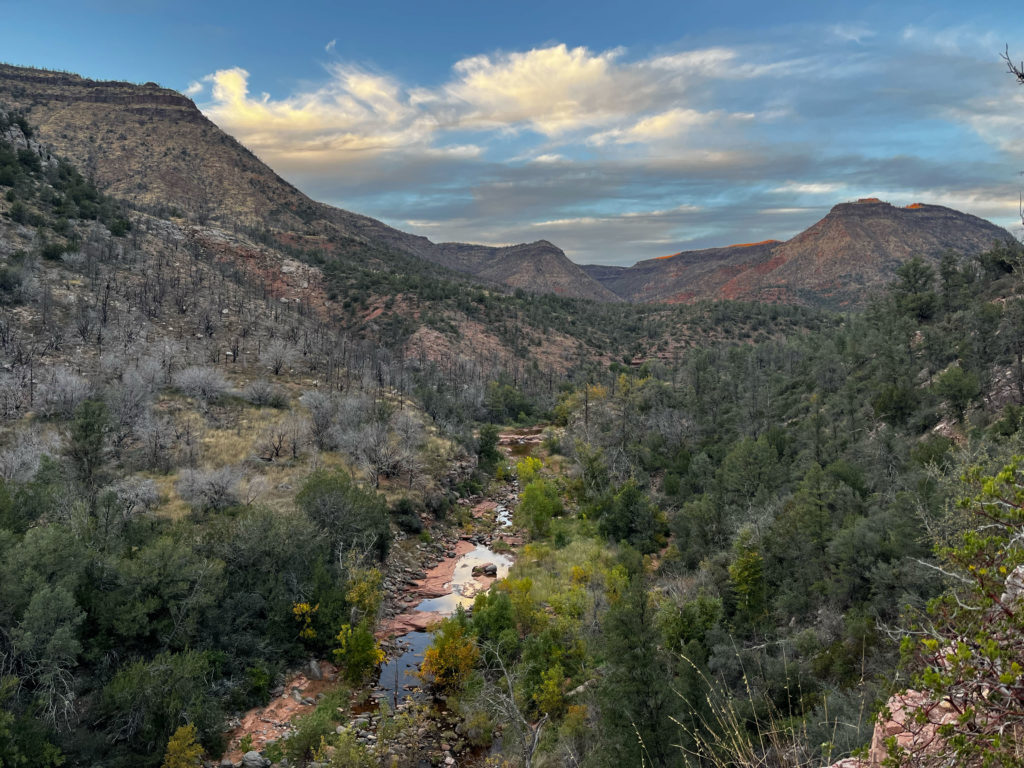
On our first day, Andy met our crew of four at the closed Bob Bear trailhead where we measured out our needed herbicide and other supplies before hiking down into the canyon. Once we reached Fossil Creek and the springs, it was clear how special of a place this was. Massive amounts of water gushed out of the ground into a creek that measures flows of 20,000 gallons per minute, and which feed a lush stretch of woodland reminiscent of the midwest. The largest Sycamore trees we had ever seen towered over our target: The thorny sea of blackberry bramble that sat below. We set to work figuring out the best strategies for battling the beast.
Over the next four days, some of us found it best to cut lengths of vine and remove them individually, while others cut and rolled the mass as if removing a rug. All the while, we dabbed minuscule amounts of herbicide to each cut stem of blackberry. Though we were using an herbicide that is neutralized by contact with water, we were proud to not spill any onto the delicate surroundings. By the end, we cut and treated about 9,000 square feet of Himalayan blackberry.
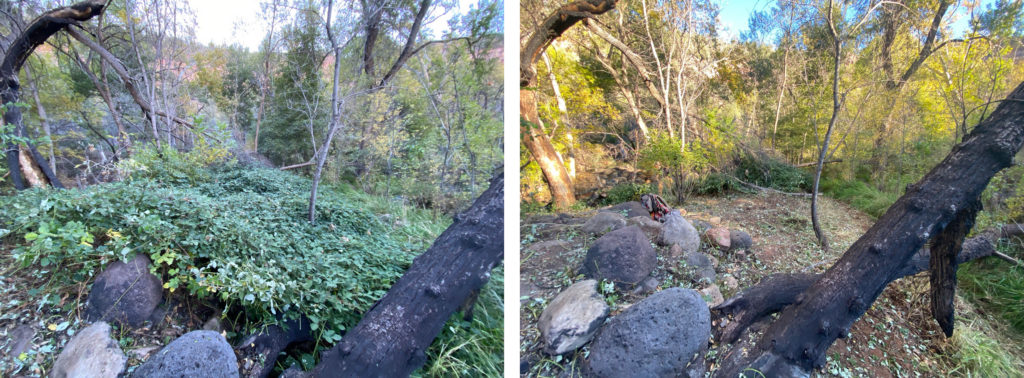
During the four days, we backpacked in just a few hundred feet from our work site. We could not have asked for a better place to call our temporary home. Each day a gentle, dappled sun shone down, we were surrounded by abundant animal and plant life, the sounds of babbling streams filled our ears, and we saw no other people in an area that is normally one of the busiest sites on the whole Tonto National Forest, attracting visitors from Phoenix seeking an escape from the dry desert. We got especially lucky, as the area had been closed ever since the Backbone Fire due to erosion concerns, and opened back up to the public just days after we left. It was all well worth a few cold nights.
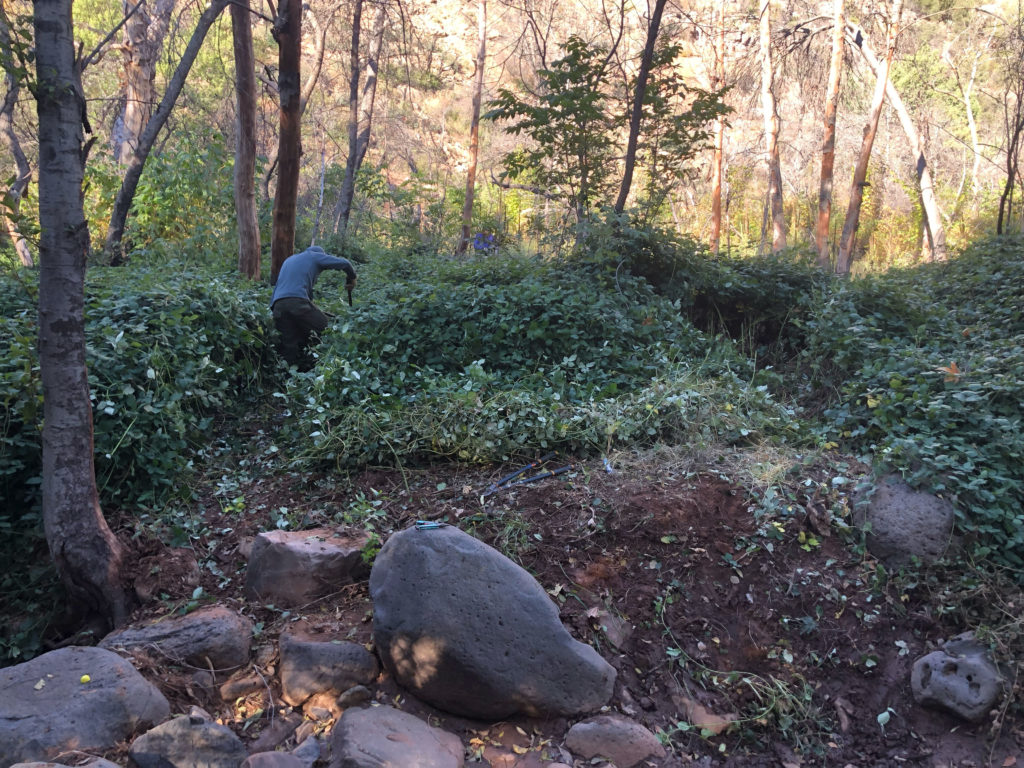
While we peacefully cut vines in a woodland paradise, the other mini crew, led by Jonathan Patt, continued much needed work on the popular Silver Peak Trail in the Coronado National Forest’s Chiricahua Mountains, ultimately maintaining about 3/4 of the way up the trail and cutting fallen trees all the way to the top. For details on that work, check out the previous blog post.
After three days of R and R over the Halloweekend, the nine of us of the Wild Stew Field Crew rejoined up at Barfoot Park near the top of the Chiricahua Mountains. There we joined our new volunteer coordinator, Luke Koenig, our deputy director and stewardship director (not to mention senior camp cook and saw expert) Brian Stulz for three days of crosscut saw training. This amazing event was put on by longtime Wild Arizona collaborator and Douglas district recreation staff officer Zac Ribbing of the Coronado National Forest. Also present to both learn and share knowledge were other Forest Service employees, members of the Arizona Conservation Corps, and volunteers from the Arizona Trail Association.
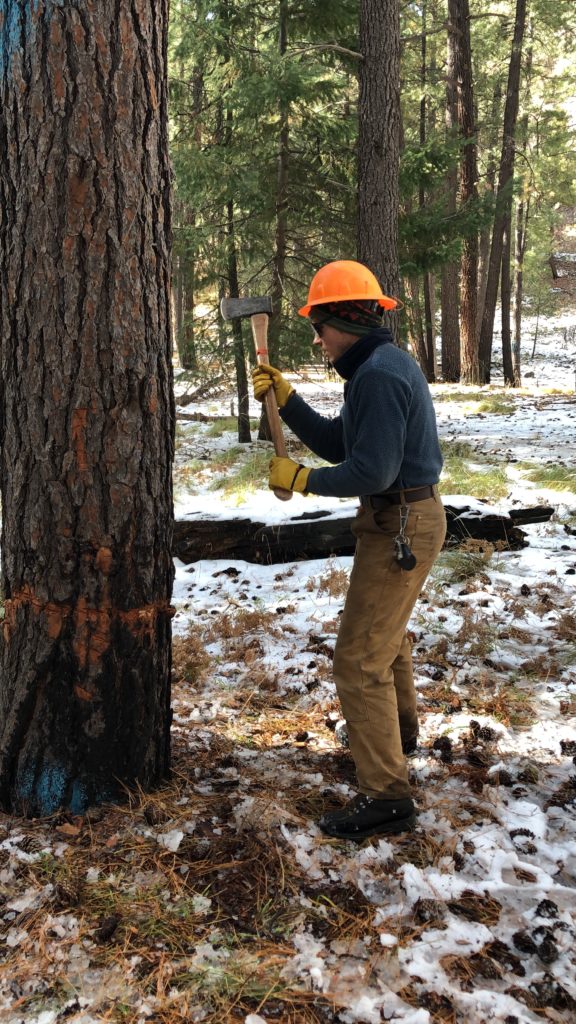
If the cold nights at Fossil Springs were a prelude, our time at Barfoot was the real deal. We were lucky (some would say unlucky) to be blessed with cold days, colder nights, and three inches of fresh, dry snow fall on us, perfectly setting the mood. In the evenings, our crosscut party took part in shared meals, campfires, and s’mores to warm us up.
